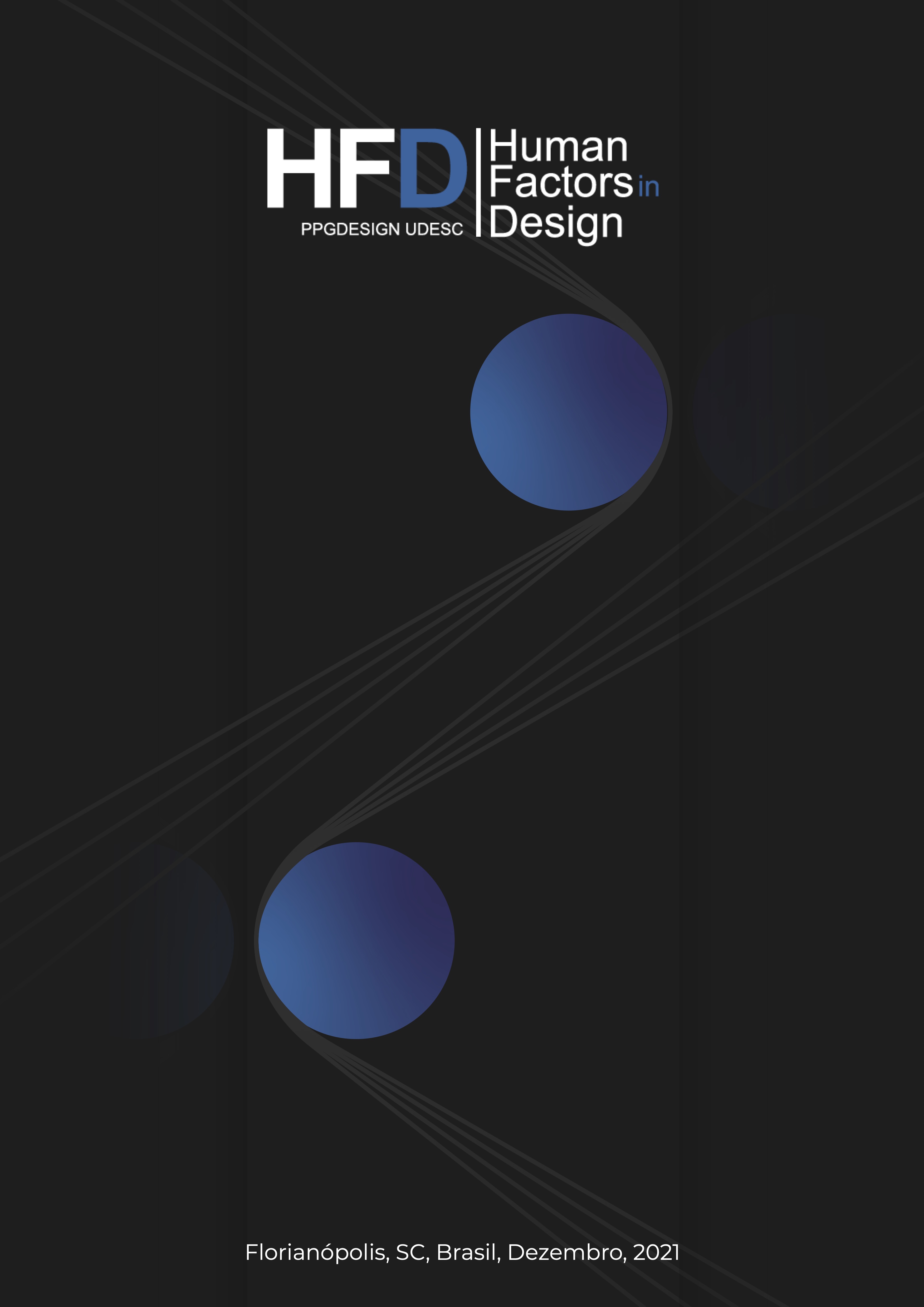Task analysis of washing clothes
an exploratory study on the interfaces’ accessibility
DOI:
https://doi.org/10.5965/2316796310202021094Keywords:
Inclusive Design, Usability, Washing machine, visual impairmentAbstract
This paper aims to identify and analyze how the sighted user and the visually impaired user interact with the washing machine in order to identify its accessibility, usability and user experience. For this purpose, an exploratory study was carried out with sighted and blind people, which consists of a task analysis of washing clothes, associated with pre- and post-questionnaires to identify the ease of starting the product, the satisfaction in using it, and its level of accessibility. The results show that the highest difficulties found during the task of washing clothes are related to activities of separating clothes, selecting the appropriate washing program, and inserting soap and softener in the corresponding compartments.
Downloads
References
ABNT, A. B. DE N. T. NBR ISO 9241-11 - Requisitos ergonômicos para o trabalho com dispositivos de interação visual Parte 11: Orientações sobre usabilidade. 2011.
AGUIAR, V. C. DE. O desenvolvimento da usabilidade de interfaces em projetos - um estudo de caso em lavadora de roupa, 2004. Universidade Federal de São Carlos.
BARTHELMESS, P.; OVIATT, S. Multimodal Interfaces: Combining Interfaces to Accomplish a Single Task. HCI Beyond the GUI. p.391–444, 2008. Elsevier.
BIFANO, A. C. S. Uso Cotidiano De Produtos No Âmbito Doméstico : Interface Empresa E Economia Familiar. Revista Brasileira de Economia Doméstica, p. 174–204, 2015. Viçosa.
BRASIL, C. DE A. T. Tecnologia Assistiva. Brasília, 2009.
CONNNELL, B. J.; MACE, R.; MUELLER, J.; et al. The principles of universal design: Version 2.0. The Center for Universal Design, 2001.
EYES, B. M. Be My Eyes: Levando a visão para pessoas cegas ou com visão limitada. Disponível em: <https://www.bemyeyes.com/language/portuguese-brazil>. Acesso em: 2/3/2020.
GARRETT, J. J. The elements of user experience: user-centered design for the Web an Beyond. 2o ed. 2003.
IIDA, I. Ergonomia: projeto e produção. Editora Blusher, 2005.
ISO, I. O. FOR S. ISO 9241-210:2019 | Ergonomics of human-system interaction — Part 210: Human-centred design for interactive systems. 2019.
KEATES, S.; CLARKSON, P. J. Countering design exclusion through inclusive design. ACM SIGCAPH Computers and the Physically Handicapped, n. 73–74, p. 69, 2002.
LENS, L. Laundry Lens | Laundry symbols reader. Disponível em: <https://laundrylensapp.wixsite.com/home>. Acesso em: 19/8/2020.
LOBACH, B. Design industrial: Bases para a configuração dos produtos industriais. São Paulo: Editora Edgard Blücher LTDA, 2001.
MACE, R. L.; HARDIE, G. J.; PLACE, J. P. Accessible environments: toward universal design. North Carolina: The Center for Universal Design, 1996.
MAGUIRE, M. Methods to support human-centred design. International Journal of Human Computer Studies, v. 55, n. 4, p. 587–634, 2001. Academic Press.
MARCHI, S. R. Design Universal de Código de Cores Tátil: contribuição e acessibilidade para pessoas com deficiência visual. 2019. Universidade Federal do Paraná.
NORMAN, D. A.; DRAPER, S. W. Cognitive Engineering. User Centered System Design: New Perspectives on Human-Computer Interaction. p.526, 1986. New Jersey: Lawrence Erlbaum Associates Inc.
OLIVEIRA, T. A. B. DE. Estímulos sensoriais: Potencialidade na interação de usuários cegos em painéis de eletrodomésticos, 2018. Universidade do Estado de Santa Catarina.
PARK, C. W.; ALDERMAN, J. Designing across senses : a multimodal approach to product design. 1o ed. Sebastopol: O’Rilley Media, Inc, 2018.
PARK, JOOHWAN; HAN, S. H.; PARK, JUNGCHUL; et al. Development of a web-based user experience evaluation system for home appliances. International Journal of Industrial Ergonomics, v. 67, p. 216–228, 2018.
RAPOSO, N. O. Elementos estruturantes para o projeto de interfaces multimodais, 2015. Manaus: Universidade Federal do Amazonas.
REZENDE, M. H. D. M. Modelo do projetista e modelo do usuário no design de produtos: um estudo da atividade de lavar roupas. 2014. Universidade Federal de São Carlos.
SENADO, A. Pessoas com deficiência visual cobram eletrodomésticos adaptados — Senado Notícias. Disponível em: <https://www12.senado.leg.br/noticias/materias/2019/08/20/pessoas-com-deficiencia-visual-cobram-eletrodomesticos-adaptados>. Acesso em: 10/10/2019.
SULLIVAN, H. T.; SAHASRABUDHE, S. Envisioning inclusive futures: Technology-based assistive sensory and action substitution. Futures, v. 87, p. 140–148, 2017.
Downloads
Published
How to Cite
Issue
Section
License
Copyright (c) 2021 Human Factors in Design

This work is licensed under a Creative Commons Attribution 4.0 International License.
Os artigos publicados pela revista são de uso gratuito, destinados a aplicações acadêmicas e não comerciais. Os direitos autorais são todos cedidos à revista. Os artigos cujos autores são identificados representam a expressão do ponto de vista de seus autores e não a posição oficial da revista Human Factors Design. O (s) autor (es) se compromete a sempre que publicar material referente ao artigo publicado na Revista Human Factors Design mencionar a referida publicação da seguinte forma:
Este artigo foi públicado originalmente pela Revista Human Factors Design em seu volume (colocar o volume), número (colocar o número) no ano de (colocar o ano) e pode ser acessado em: https://periodicos.udesc.br/index.php/hfd/index


